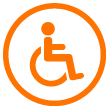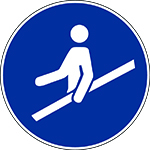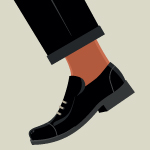By Jeri Lundgren, BSN, RN, PHN, CWS, CWCN
Many factors can contribute to the formation of a pressure ulcer, but it’s rare that one develops in an active, mobile patient. As the National Pressure Ulcer Advisory Panel 2014 guidelines state, “Pressure ulcers cannot form without loading, or pressure on the tissue. Extended periods of lying or sitting on a particular body part and failure to redistribute the pressure can lead to ischemia and therefore tissue damage.” Thus, immobility is frequently the root cause of pressure ulcer development.
As clinicians, we need to assess all patients for immobility and address the source. The goal is to modify, stabilize, or eliminate the cause of the immobility.
Going beyond the basics
Clinicians typically respond to immobility with interventions designed to minimize the pressure. Interventions might include pressure redistribution products for the bed and wheelchair, elevation of the heels off the bed, and an aggressive turning and repositioning program for the patient.
Although these interventions are appropriate and consistent with standards of practice, we must take the next step by ensuring our patients are moving as much as possible. We need to consult with occupational and physical therapists and tap into restorative nursing programs to help keep patients more active. Strategies include an exercise program that promotes strengthening, balance, stability, and endurance through such activities as lifting weights, tai chi, agility courses, pre-Pilates, boxing, walking, and kayaking.
Here are some tips for encouraging mobility.
 Have patience.
Have patience.
Allow patients to do tasks for themselves, even if the task takes time. Even the simplest task such as brushing teeth gets the patient moving.
 Monitor wheelchair use.
Monitor wheelchair use.
Encourage patients who can walk to use a wheelchair only when absolutely necessary. For those who are wheelchair bound, encourage them to propel themselves as much as possible.
Create a mobile-friendly environment. 
An environment that provides safety for mobile patients includes uncluttered hallways; handrails; adequate lighting; nonslip, nonglare flooring that is even; and contrasting colors from floor to walls to highlight depth.
 Use equipment as needed to promote mobility.
Use equipment as needed to promote mobility.
Grab bars on the bed help promote movement in the bed as well as safe egress and transfers. Keep the height of the bed at the point where the patient’s feet can touch the floor when he or she is sitting on the side of the bed and the bend at the knee is just slightly higher than 90 degrees. Use sit-to-stand or ceiling lifts to promote mobility. And remember the basics, such as properly fitted walkers and canes, grab bars in the bathroom, and an appropriate toilet seat height.
Keep patients active during the day.
Plan activity programs throughout the day. Limit napping to once a day for no more than 20 to 30 minutes.
 Promote adequate sleep at night.
Promote adequate sleep at night.
Limit noise at night. Use amber lighting in the evening and throughout the night to stimulate melatonin production. Implement interventions, such as pressure redistribution mattress, overnight incontinence products, and heel-lift devices, to prevent pressure ulcers, which can interrupt sleep.
Ensure appropriate footwear at all times. 
Be sure socks and shoes fit properly. Socks shouldn’t be too tight or too loose, which could lead to slipping and subsequent friction, causing skin injury. Ensure that shoe soles aren’t slippery. If the patient shuffles when he or she walks, soles need to accommodate this characteristic without excessive slipperiness.
 Encourage facility staff and family members to participate.
Encourage facility staff and family members to participate.
Encourage staff and family members to participate in the exercise programs, so everyone benefits.
Going the distance
By keeping patients mobile, we can help reduce the risk of pressure ulcer formation and help our patients achieve better outcomes.
Selected reference
National Pressure Ulcer Advisory Panel, European Pressure Advisory Panel and Pan Pacific Pressure Injury Alliance. Prevention and treatment of pressure ulcers: quick reference guide. Perth, Australia: Cambridge Media; 2014.
Jeri Lundgren is president of Senior Providers Resource, LLC, in Cape Coral, Florida. She has been specializing in wound prevention and management since 1990.
DISCLAIMER: All clinical recommendations are intended to assist with determining the appropriate wound therapy for the patient. Responsibility for final decisions and actions related to care of specific patients shall remain the obligation of the institution, its staff, and the patients’ attending physicians. Nothing in this information shall be deemed to constitute the providing of medical care or the diagnosis of any medical condition. Individuals should contact their healthcare providers for medical-related information.














